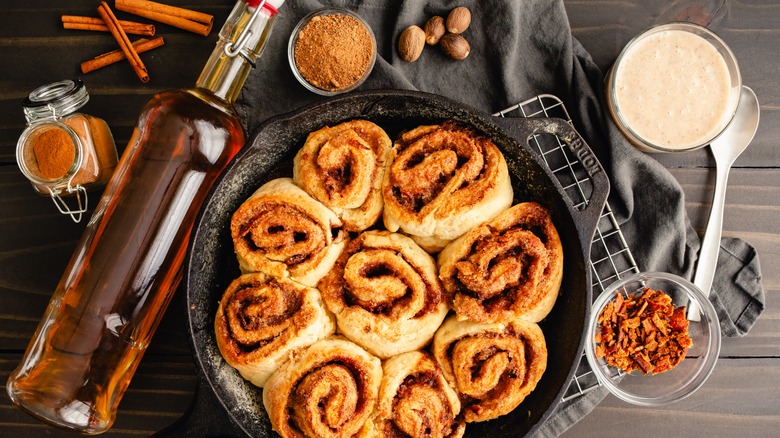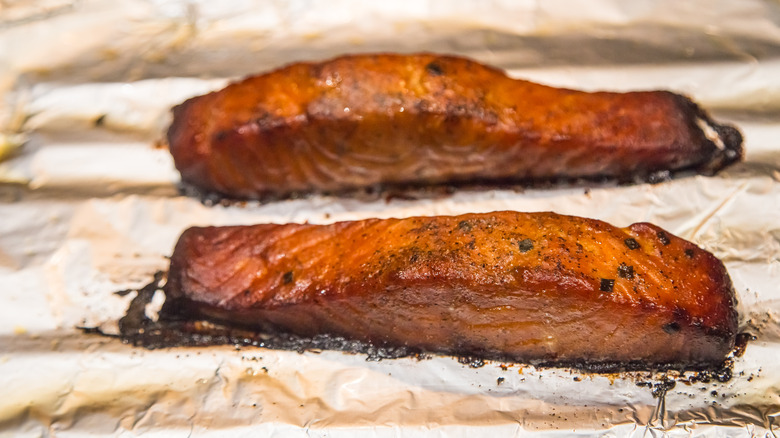The Rule To Remember For Cooking With High Vs Low Proof Bourbon
As if cooking with bourbon weren't intriguing enough, some deeper nuances may send you back to the proverbial chopping block. In a strictly metaphorical sense, that would mean disregarding everything you presumed about this brilliantly boozy ingredient — but this isn't that. Instead, we're sharing a simple tweak from an expert in the field: Kentucky Derby chef Robert Lopez. Nothing is more iconic to Kentucky than bourbon and horse racing, so Lopez created the 2024 Churchill Downs menu for the 150th Run of the Roses with a focus on bourbon and its multi-faceted flavors.
Though chef Lopez enlightened Tasting Table readers with eight tips for cooking with bourbon, one stands out as highly impactful. It's the rule to remember for cooking with high proof bourbon versus low proof bourbon. According to Lopez, the proof level is crucial, since flavor intensity can either complement or overpower certain types of food. A high-proof bourbon, meaning one with more alcohol and, thus, more flavor intensity, is ideal for rich, concentrated sauces or flambé-style desserts such as bananas foster.
Younger, low-proof bourbon, on the other hand, takes a gentler approach with cooked foods. It effortlessly complements lighter fare, explains Lopez, including when it's used in tender seafood preparations such as spicy honey-glazed salmon. Pairing bourbon with sweet glazes is the secret of many a chef, including this bourbon glazed salmon recipe by Tasting Table developer Molly Madigan Pisula, who ditches the honey for brown sugar and maple syrup.
Proof matters when cooking with bourbon
It helps to have a reference point for what's considered high-proof vs. low-proof bourbon. One of the most stringently defined whiskeys, bourbon is officially regulated on several levels. To be called bourbon, there's a bevy of requirements, including being made only in America, holding a mash bill of at least 51% corn, aging in new American oak barrels, and more, based on various distinctions. But a highly relevant feature is the proof level, which is what matters so much when cooking with bourbon.
Proof distinctions for bourbon carry maximum or minimum proofs for distillation, barreling, and bottling. To be called a bourbon, it must be bottled at a minimum of 40% ABV (alcohol by volume) and a maximum 75% ABV. Tucked within that range is the magic equation of how a bourbon's proof changes it's food pairing. Generally speaking, low-proof bourbons fall within 40%-46% ABV, which is ideal for those lighter, delicate foods. Meanwhile, robust or concentrated flavors thrive with high-proof bourbons spanning ABV volumes from 45% up to roughly 55%.
There's nothing saying you can't cook with higher proof bourbons, but they tend to be expensive. Chef Lopez suggests bypassing the cheapest options that could warp food flavors, opting instead for mid-range prices between $20 and $50. You'll find many options in that range, both low-proof and high-proof, eventually discovering your favorites for light, sweet, earthy, fruity, spicy, bold, or rich bourbon-infused dishes.

